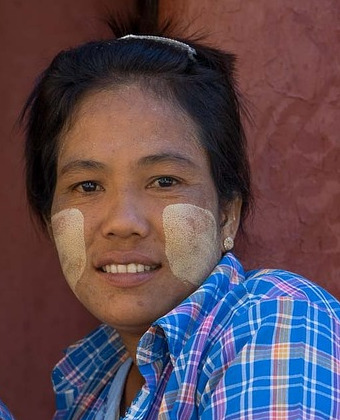
During my travels in Thailand, I couldn’t help but notice a distinctive beauty ritual practiced by many local women. They carefully apply a yellow, clay-like substance to their cheeks—a natural cosmetic known as Thanaka cream. Intrigued by this tradition, I set out to learn more about its history, cultural importance, and the benefits it offers. Although its origins lie in neighboring Myanmar, this practice has been embraced and adapted by Thai communities over time, blending ancient wisdom with modern needs.
History and Origins
The use of Thanaka cream dates back centuries in Myanmar, where it has long been a staple in everyday skincare. Traditionally made by grinding the bark of certain trees, the resulting paste is naturally yellow and renowned for its protective and beautifying properties. The practice of applying Thanaka cream was originally passed down through generations as a practical way to shield the skin from the harsh tropical sun while also enhancing one’s appearance.
As trade and cultural exchanges increased between Myanmar and its neighboring countries, the tradition of using Thanaka cream found fertile ground in Thailand. Thai women began to incorporate this natural remedy into their daily routines. Over time, the practice was refined and integrated with local beauty customs, making it a unique symbol of cross-cultural influence in the region. Today, despite the availability of modern skincare products, many continue to favor this time-honored method for its natural benefits and deep cultural roots.
Cultural Significance and Social Aspects
More than just a skincare technique, the application of Thanaka cream holds significant cultural value. In Thailand, where the tropical climate demands practical skincare solutions, this traditional cream offers both protection and a touch of natural beauty. The paste is prized for its ability to act as a barrier against ultraviolet rays, reducing the risk of sun damage while providing a cooling effect during the intense heat of the day.
Beyond its functional benefits, Thanaka cream has evolved into a social and cultural ritual. In many communities, the process of applying the cream is a cherished daily routine, often shared among family members and friends. Women exchange tips on how best to blend the paste into delicate patterns on their faces—a practice that is as much an art form as it is a beauty treatment. This communal aspect reinforces social bonds and ensures that the traditional method is passed along from one generation to the next.
When and How Thanaka Cream is Used
Unlike many modern cosmetics that are used solely for aesthetic purposes, Thanaka cream is versatile and is used in various contexts. For many Thai women, it is a part of their everyday skincare routine. Mornings often begin with a gentle application of the cream to protect the skin against environmental factors such as strong sunlight and pollution. This daily ritual not only serves a practical purpose but also connects the user with a long-standing cultural tradition.
Special occasions and cultural events can also call for a more elaborate use of Thanaka cream. During festivals and traditional celebrations, the application can be more decorative, with intricate designs that highlight the wearer’s beauty and cultural pride. Although there isn’t a strict calendar of events dedicated exclusively to its use, many women choose to enhance their appearance with the cream during weddings, family gatherings, and other social festivities, underscoring its role as both a cosmetic and a cultural emblem.
The method of application is uniquely personal. Instead of conventional makeup brushes, many opt to use their fingertips or a small piece of cloth to dab the paste in patterns that suit their individual style. This hands-on approach allows for creativity and personal expression, ensuring that every application is slightly different. The texture of Thanaka cream also means that it dries into a subtle film on the skin, offering a natural, matte finish that many find appealing compared to the glossy effects of modern makeup products.
Natural Benefits and Traditional Wisdom
One of the most appealing features of Thanaka cream is its all-natural composition. Crafted from tree bark and other organic materials, the cream is packed with antioxidants and other skin-friendly compounds. These natural ingredients work together to soothe irritated skin, reduce inflammation, and even out the complexion. For many, the cream represents a safe and effective alternative to chemical-laden modern cosmetics.
Additionally, the cooling sensation provided by Thanaka cream is particularly beneficial in Thailand’s humid climate. It helps to calm the skin and can even reduce minor irritations caused by the heat and sun exposure. Many women report that regular use of the cream not only helps maintain a youthful appearance but also instills a sense of connection with traditional practices that have stood the test of time.
In an age where natural and sustainable beauty products are gaining popularity, the enduring legacy of Thanaka cream is a reminder of the effectiveness of time-tested remedies. The practice is a blend of practical skincare and cultural heritage, one that continues to thrive amid modern influences while staying true to its ancient roots.
